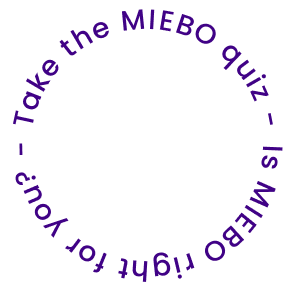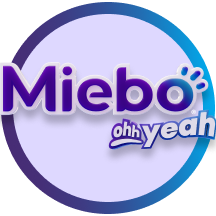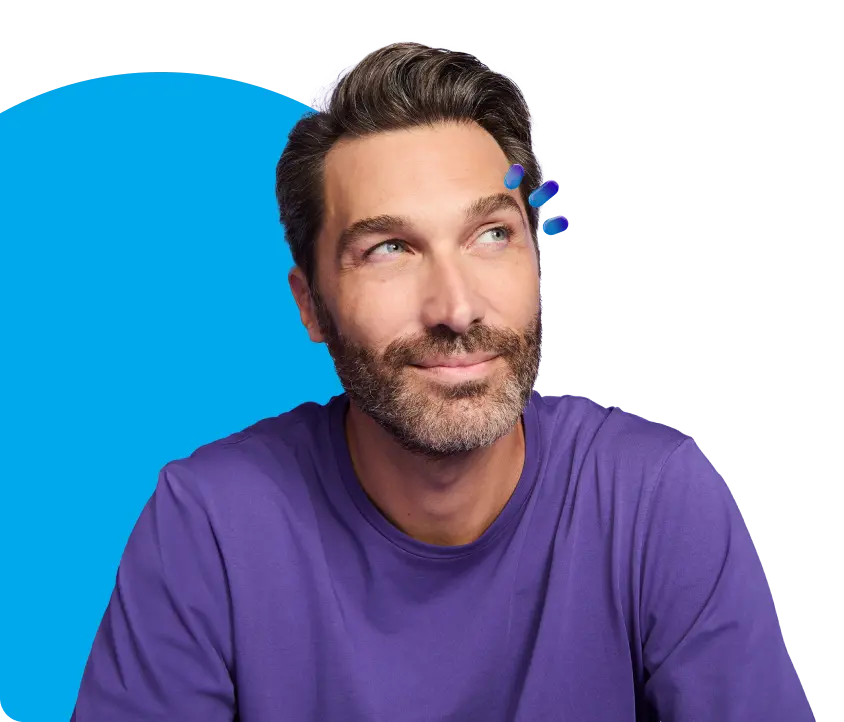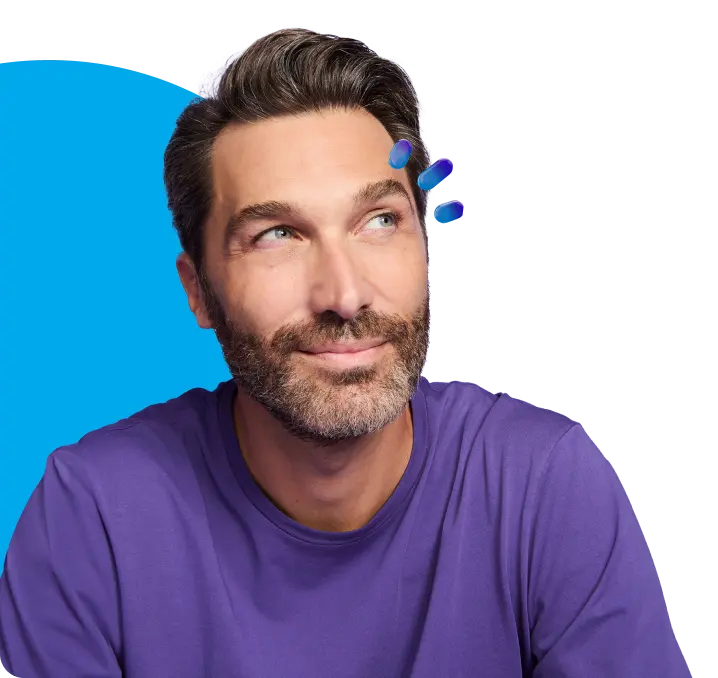Too much tear evaporation? Oh no!
Tear evaporation happens naturally to some degree, but too much can lead to problems for your eyes.
Actor portrayal
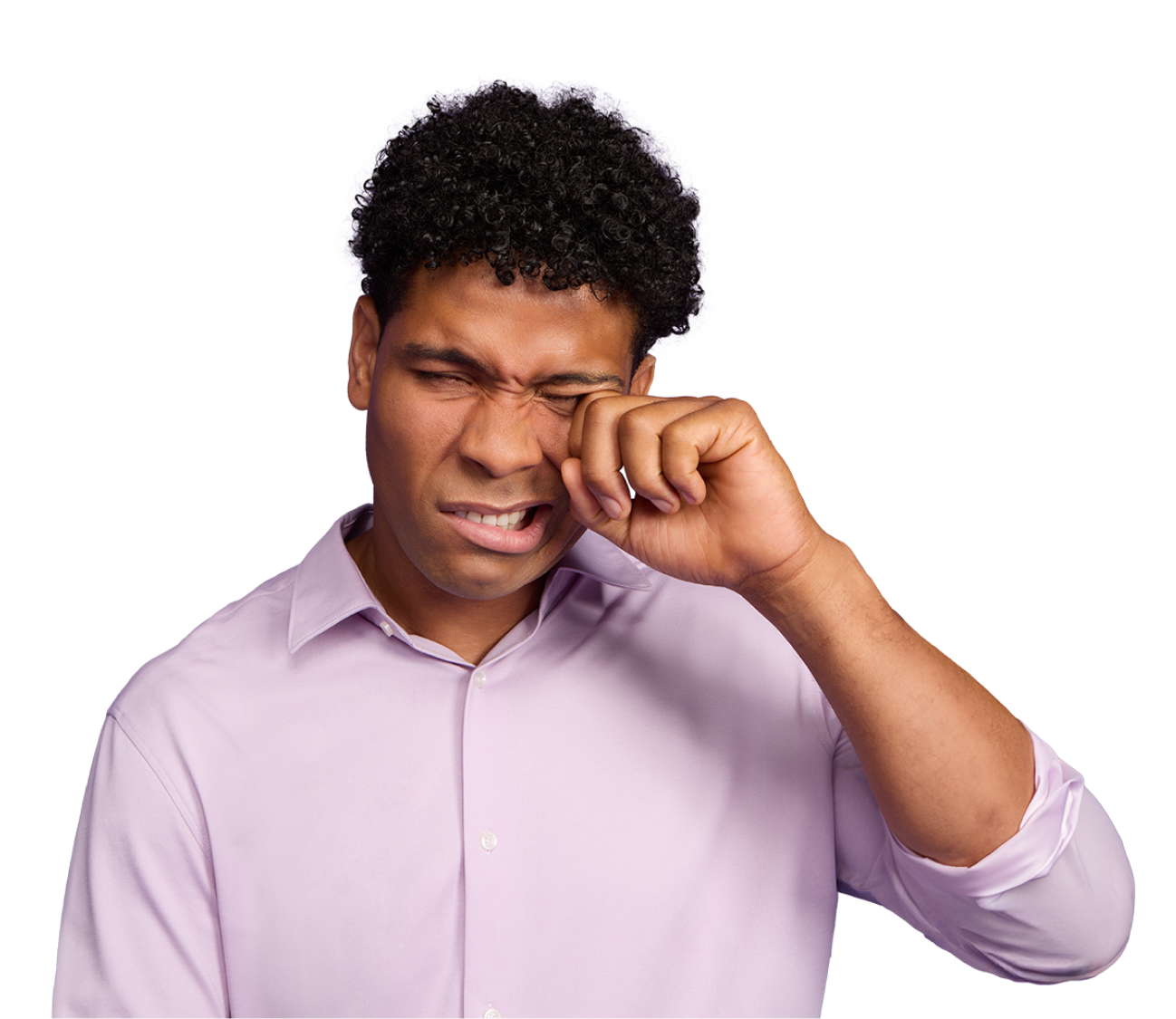
What is tear evaporation?
Everyone’s tears evaporate. But when you have evaporative dry eye, your tears escape too quickly—more than what’s considered normal. This leaves eyes feeling dry, rough, and gritty.
Why too many tears evaporate
On the outside of your eye, there is something called the “tear film.” It’s made up of 3 layers: the oily layer on top, the watery layer of tears, and the inner mucus layer.
In healthy eyes, the oily layer helps to keep the tears from drying out.
With evaporative dry eye, the oily layer isn't effective, allowing too many tears to evaporate.
A closer look
Little glands called meibomian glands make this oily layer on the surface of the eye that prevents the watery tears underneath from evaporating.
In evaporative dry eye, the meibomian glands don’t work as they should and the oily layer becomes damaged.
This damage leads to too much tear evaporation.
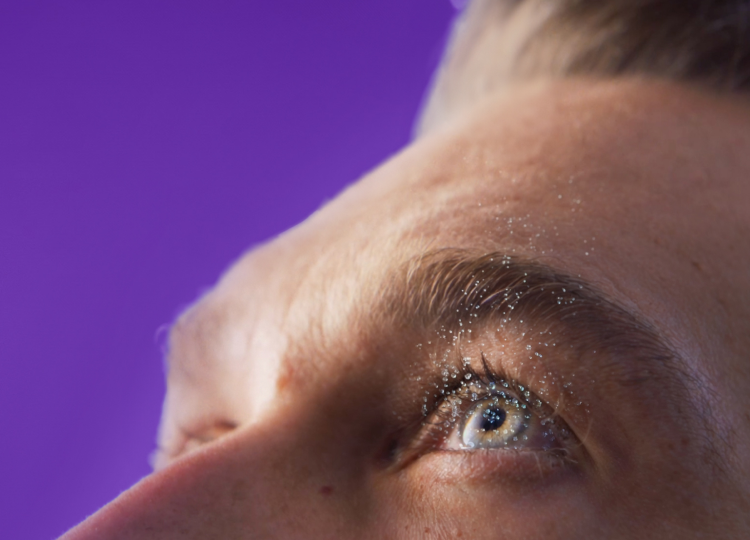
Factors that contribute to evaporative dry eye
Finding the right treatment?

Is MIEBO right for me?
If you’ve tried over-the-counter treatments, prescriptions, or procedures and are still looking for relief, it’s time to try something different. Consider asking your doctor about MIEBO.
Other eye drops may add tears or increase the number of tears you make. But for about 9 out of 10 people with dry eye, the cause, in part, is too much tear evaporation. This means that other drops alone may not be enough.
MIEBO is the only prescription eye drop that directly targets too much tear evaporation.
Finding the
right treatment?

INDICATION
MIEBO® (perfluorohexyloctane ophthalmic solution) is used to treat the signs and symptoms of dry eye disease.
IMPORTANT SAFETY INFORMATION
- Remove contact lenses before using MIEBO and wait for at least 30 minutes before reinserting
- It is important to use MIEBO exactly as prescribed
- It is not known if MIEBO is safe and effective in children under the age of 18
- The most common eye side effect seen in studies was blurred vision (1% to 3% of patients reported blurred vision and eye redness)
You are encouraged to report negative side effects of prescription drugs to the FDA. Visit www.fda.gov/medwatch or call 1-800-FDA-1088.
Click here for full Prescribing Information for MIEBO.
INDICATION
MIEBO® (perfluorohexyloctane ophthalmic solution) is used to treat the signs and symptoms of dry eye disease.
IMPORTANT SAFETY INFORMATION
- Remove contact lenses before using MIEBO and wait for at least 30 minutes before reinserting
- It is important to use MIEBO exactly as prescribed
- It is not known if MIEBO is safe and effective in children under the age of 18
- The most common eye side effect seen in studies was blurred vision (1% to 3% of patients reported blurred vision and eye redness)
You are encouraged to report negative side effects of prescription drugs to the FDA. Visit www.fda.gov/medwatch or call 1-800-FDA-1088.
Click here for full Prescribing Information for MIEBO.





